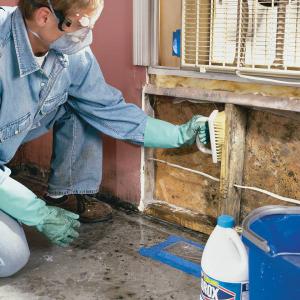
By description mold could serve as the antagonist in a horror movie. It only lives in the deepest, darkest areas of your home. Basements, attics, even crawl spaces are the prime locations for spores to take root, silently taking over the depths of your property lines. As a homeowner, you can take all the preventative measures but at some point you’ll be very likely to come face to face with this foe. Let’s look at some of the best ways to defend yourself from these little monsters.
Before jumping into a task like this, make sure you take advantage of the information around you. If you’re reading this, you’ve already taking part in some research, but don’t stop here. Make sure to educate yourself on the different types of mold and mildew that exist and compare what you’ve found in your home to the many examples at your fingertips. When undertaking a task like this one, take your time and do your due diligence before diving in.
If you determine that your mold issue is treatable in a DIY fashion, there are a few tactics you can use to knock out your issue. If mildew is the problem, you can most likely take care of it with a little bit of soap and warm water. One thing you’ll want to make sure of though is that afterwards the problematic area stays dry… or else you’ll be back to where you started in a short period of time.
Surface mold of the more stubborn varieties can be removed from your home with a mixture of bleach and water. Recommended ratios vary between 1:8 and 1:9 parts bleach to water. However, do not under any circumstances add any sort of detergent or ammonia to it as this can create a very dangerous gas. Here’s another little tidbit; if you aren’t sure if it’s surface mold, dab it a few times with the bleach and water mixture. If the black fades, it’s mold; if it doesn’t, it’s just dirt.
Based on a little research (see links to full articles below), if the area of your mold infestation is greater than 10 sq. ft., I would recommend that you reach out to a professional. At that point you’ll most likely be able to smell the musty odor of the large area of mold and any action would mean complete removal of the affected area.
If you’re set on removing mold yourself no matter what, please take proper precautions by dressing in old clothes that will cover your body adequately, and wear safety glasses, gloves, and respirators to prevent inhalation. When disposing of the removed materials, either heavy duty contractor bags or wrapping items in plastic sheeting do a great job of keeping the workspace tidy.
Here are a couple links to articles that will help if you prefer to do it yourself no matter the challenge:
